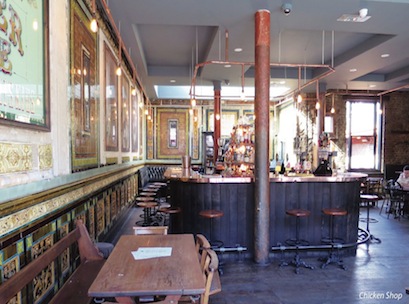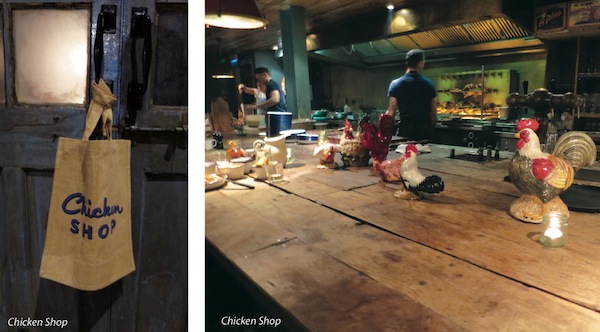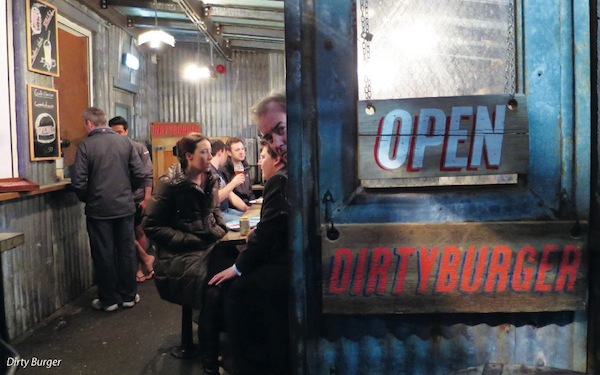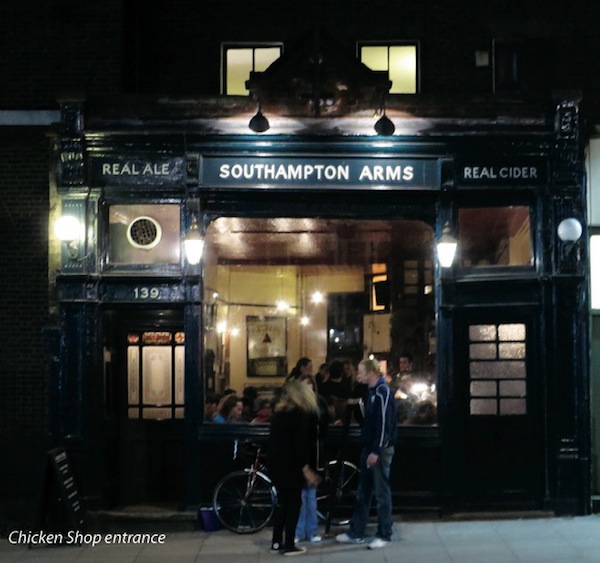Franchising, retail, business

03/10/2014
Last month I met up with some architect friends in London. Their office is in the increasingly hip Kentish Town, just north of its better known neighbour, Camden.
When they mentioned that we’d be going to the Chicken Shop for dinner, I must admit my first thought was, is that the best Kentish Town can offer?
As it turned out, it was pretty close. But not in the way you think.
The Chicken Shop, part of the uber-cool Soho House group, is one of a chain of three in London. It lurks in the basement under another Soho House restaurant, Pizza East.
What it does is to take the old premise of chicken and chips, simplify it, improve it, place it in a beautifully under signed space, and give it a slight air of exclusivity, denoted by the fact that the only sign is a Chicken Shop bag hanging on the front door handle.
The menu is extremely simple. There is barbequed organic chicken – the only choice is quarter, half, or whole. Accompanying this is a choice of chips, corn, coleslaw, or salad, a limited range of drinks and desserts, and that’s it.
The design of the space is equally simple, but deceptively so.
The ceiling is low, and timber clad. The focus is the grill at the back where the only main menu item is being cooked.
The sides of the space house a lot of the storage: serving staff pull plates, silverware, and condiments from what looks like recycled cabinets. Lighting is low and intimate.
The chicken, needless to say, is delicious. It’s also not cheap. But cheap is not what this is about.
It’s a reinvention of a traditional and well loved standard by an organisation dedicated to doing traditional things in new ways. And its creatively aware target audience loves it. But there’s more. Up around the corner, in a glorified lean-to off the car park of some warehouse studios, is Dirty Burger, also a part of Soho House.
But there’s more. Up around the corner, in a glorified lean-to off the car park of some warehouse studios, is Dirty Burger, also a part of Soho House.
The menu here is limited: burgers, chips, and onion rings. There is a concession to breakfast with bacon and egg or sausage and egg rolls.
The atmosphere is reminiscent of an old style transport cafe, with plenty of corrugated metal, fluorescent lights, and chain hung signs. It’s the sort of place you’d expect to find the one and only teaspoon chained to the counter.
That’s the secret. In reinventing the traditional category, what Soho House has done is invent a history to go along with it. This audience is too young to remember greasy spoon transport cafes – not that they ever looked like this anyway. It’s what I call new old design – doing something old and traditional in a new way that still feels old.
 Pubs are at it as well. There is a shocking amount of derelict pubs in London.
Pubs are at it as well. There is a shocking amount of derelict pubs in London.
Some are being bought up by new-thinking entrepreneurs and are being renovated in the new old way – that is to say, stripped back to basic materials, finishes, and furnishings in a reaction to the plastic pubs of the 80s and 90s.
The new clientele enjoy old fashioned craft beer and cider. These are no go areas for the Heinekens and Coronas of the world. Traditional, but beautifully executed Scotch eggs and roast pork replace gourmet panini and vegetarian lasagna.
It’s old but it’s been reinvented in a new way that respects the old. It’s the new old.
London is a new old city now: the old post war skyline still remains, although St Paul’s Cathedral competes with the new breed of nicknamed skyscrapers – the Shard, the Gherkin, the Walkie Talkie, and the Cheese Grater.
A pop up shopping mall has been built from shipping containers. Exquisite fresh street art adorns the old brick walls of Spitalfields and Brick Lane. Smog blackened, graffitied brick walls jostle with steel and high tech glass on the edges of the city.
It’s exciting to see this reinvention of the past as London careers towards the future. Even Prince Charles, who famously hates the new London, would secretly approve of a new old pint of bitter and some chicken and chips.
Gary McCartney is owner of McCartney Design, an integrated design studio. He can be contacted at gary@ mccartneydesign.com.au, or find out more at www. mccartneydesign.com.au

By:http://www.insideretail.com.au/blog/2014/10/03/new-old-ideas/